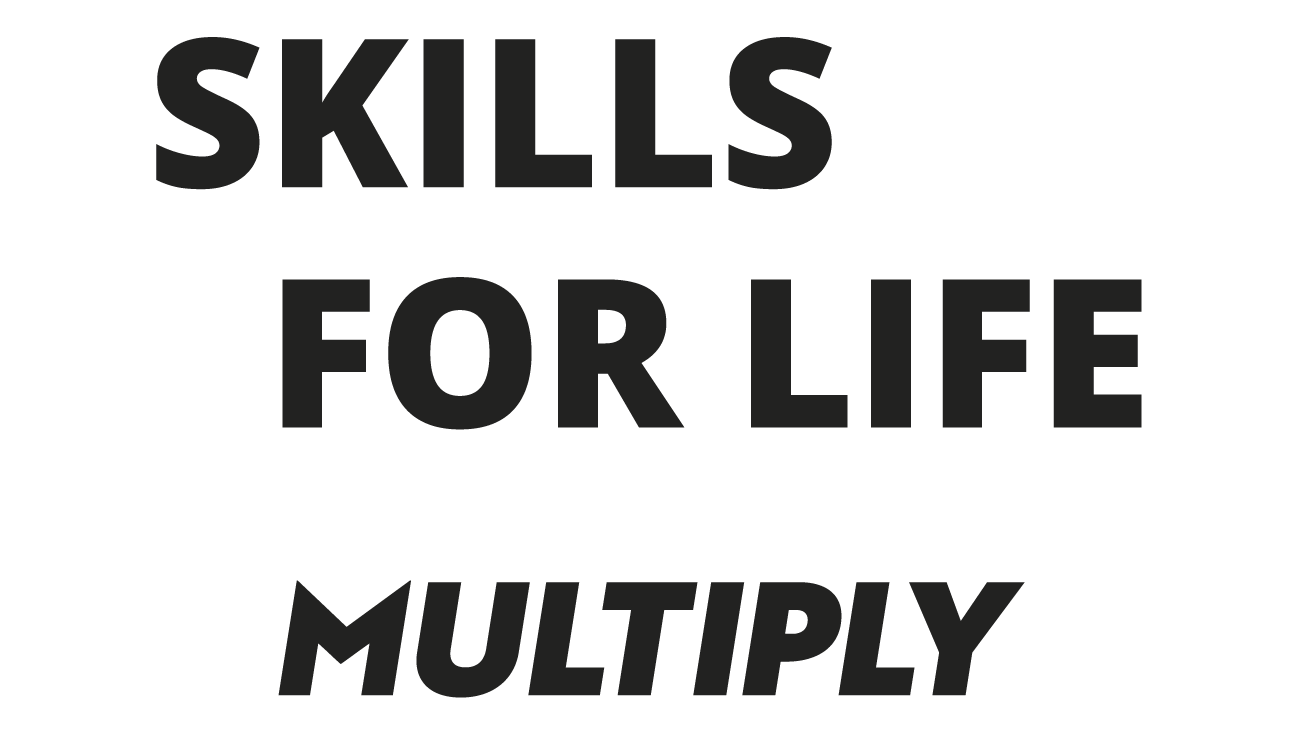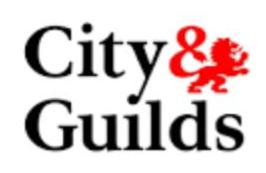UGANDA COMMUNITY RELIEF ASSOCIATION- UCRA
COMPLAINTS PROCEDURE
“An expression of dissatisfaction, not resolved immediately to the customer’s satisfaction, about the level, quality or nature of a service provided by College. This includes the conduct of staff* when delivering the service.”
Making complaints
A complaint can be made in a variety of ways although in all cases a complaint form (a copy is attached to this policy) should be completed. This can be completed by the complainant or on their behalf by a member of staff or complainant’s representative. This form ensures that we collect relevant information in a standard format and enables the person to tell us what they would like us to do.
By telephone or in person
If the caller or visitor is unhappy with the service they have received, and it is not possible to immediately resolve the issue to their satisfaction, we should offer them the opportunity of making a formal complaint.
If the caller or visitor wishes to make a formal complaint they should be asked whether they wish to complete a complaint form or whether they would like a form completed on their behalf.
If they wish to complete a complaint form they should be sent or given a copy of this policy with the Complaint Form attached.
If they would like a form completed on their behalf the officer dealing with the complainant (or another officer if the complainant requests this) should complete the complaint form with the complainant and then explain what happens next in the procedure. The officer should not attempt to deal with the complaint at this stage.
A copy of the complaint form should be returned to or given to the complainant.
In writing
Candidates may also express dissatisfaction with a service in writing. Where such a letter is received it should not generally be treated as a formal complaint in the first instance. Normally, the officer responding to the letter should attempt to resolve the matter in their reply, as this is assumed to be the equivalent of trying to immediately resolve the issue to the customer's satisfaction" as applied to telephone or personal complaints.
The reply to the letter should always explain to the complainant that if they are not satisfied with the response they are able to submit a formal complaint and should explain to the complainant how to do so.
Through a representative
At any stage of the complaints process a customer may make a complaint through a representative or an agent authorised to act on their behalf. These may include, for example, customer representative, Member of Parliament, local Councillor, solicitor or Citizens’ Advice Bureau staff.
The customer’s representative can either advise the customer about the complaints procedure, or take up the complaint on the Candidates’ behalf, acting as their advocate. In the latter case, the representative should help the customer complete the complaint form and refer the complaint to the appropriate person according to the stage the complaint has reached. Any responses should be copied to the customer representative as well as the complainant.
Receipt and logging of Complaints
All complaints forms should be passed to the Centre Director. Details of the complaint are logged onto the complaints database, after checking that the stage is correct. A standard acknowledgement letter to the complainant (and their representative, if applicable) will be sent within one working day. This will detail who is dealing with the complaint and when they are due to receive a full reply. The Target Date is for a response to be sent within ten working days. For example, if a complaint was logged on a Friday then a reply should be sent (first class) before the Friday in two weeks’ time.
The officer logging the complaint will then be instructed by the Director to distribute it to the appropriate officer to investigate and respond according to the stage.
Stages of Complaint
There are three stages in the complaints policy, and each complaint should start at the first stage and progress through until it has been resolved. However the Director has the discretion to bypass stages if it is warranted. For example a complaint concerning an Assessor could be investigated by the Internal Verifier and start at Stage 2.
Complaints from Candidates with special needs could also start from Stage 2. In this case, the receiving officer will pass the complaint to the Director, clearly stating the customer’s situation.
Stage 1 – Team Leader Level
A stage 1 complaint begins as soon as we have received notification of it. After logging, the complaint is passed to the Team Leader who will investigate and respond within the Target Date. There may a few occasions where a full investigation is not possible within this timescale. In this instance a reply should still be sent within ten days explaining why and giving a definite date for a reply.
Investigating the complaint:
At stage 1 the Team Leader will investigate the complaint. This should involve finding out what happened, why it happened and what can be done now. It can involve talking to staff, looking at files and records, checking whether policies and procedures were followed or were inadequate, and drafting a response to the complainant.
This response should address the points raised by the complaint. It will explain whether or not College felt the complaint to be justified or not. Even if was not justified the complaint will still be investigated because the complainant had felt aggrieved. It will detail what investigation was undertaken and the outcome of this. The complainant will be offered compensation or an apology where appropriate.
Satisfaction:
At each stage in the process, the person responding to the complainant should ask them to state whether or not they are satisfied with the response to their complaint. They should advise the complainant of the next stage in the procedure if they are not satisfied and wish to take the complaint further.
Stage 2 – Director Level
If the complainant is not satisfied with the response at stage 1, they should then submit a stage 2 complaint, which will be responded to by the Director. The registration of the complaint at this level will be acknowledged by letter on the same day. The relevant person will then investigate the complaint and respond within ten working days.
Stage 3 - Complaints Panel
If the complainant is not satisfied with the response at stage 2, they should submit a stage 3 complaint. A complaints panel will be established, to which the complainant will be invited. The panel should meet within one month of the complaint reaching stage 3.
The complaints panel will consist of four people: a senior member of staff, a senior member of an external/impartial organisation empathic to the service the Centre provides, a management committee member and one customer representative. The senior staff member should be the Director. The customer representative should not be from the same address in which the complainant lives.
If the complainant wishes, they may request that they make their appeal to the Panel in person. They may bring someone, including their customer representative, to help them put their case.
One of the four panel members will then be elected as Chair, the role of whom will be to ensure that the complaint is fully re-investigated and the response is not just a reproduction of previous responses. When the Panel has discussed the complaint they will respond to the complainant within 7 days.
If the customer feels that the Centre has discriminated against them on the grounds of race or gender they can take the complaint to the county court at any time.
If there are a number of complaints presented together then the person investigating should decide whether to log it as one complaint or many. Regardless of this decision each issue will still be investigated thoroughly.
Confidentiality Related to the Complaint Process:
Handling learner grievances can be tricky for college management. They inevitably involve matters that are personal to the learner. For this reason, the issue of confidentiality can play a significant role in the complaints process and is an area that can be particularly challenging. The management often find themselves having to juggle completing obligations to the learner who has brought the grievance, any other learner/assessor who is involved in the complaint and of course the organisation itself. The procedure followed when faced with confidentiality issues surrounding a learnercomplaint is given below:
1. Keeping the pool small
The general rule of thumb is that when handling grievances, it is best to keep the matter as confidential as possible, limiting both the number of people who are aware of the grievance and the information that each of those have access to. This approach will reduce the risk of confidential information being shared and the subsequent negative impact on the parties involved (and staff morale more generally). It will also make it more likely that the situation can be resolved smoothly and normal working arrangements can be resumed – particularly important where concerns are raised about colleagues with whom an individual will need to continue to work.
2. Work with the aggrieved learner
If confidentiality is going to be an issue, it is important to ensure that the complainant in question fully understands the grievance process, how the college intends to handle confidentiality and that the college is working with the best interest in mind. It is normally a good idea to suggest a list of people that you need to be aware of or involved in the grievance and specifically what details they need to know. The individual’s feedback on this can be invited. It’s better to tackle this upfront rather than waiting until the complainant raises it as an issue and then having to justify the actions taken.
3. Need to know
If someone needs to know about the grievance, then it should be considered carefully how much detail that individual needs to know in order to fulfil their role in the process (e.g. if they are being interviewed regarding a specific point of the grievance). It will not always be necessary to reveal the name of the complainant being investigated.
An issue that often arises is whether the complainant’ssupervisor needs to be informed of the grievance. Naturally the answer to this will depend on the exact circumstances of the grievance, including whether the supervisor is implicated or needs to be involved in the investigation or decision-making. The supervisor may also be central to the resolution of the grievance. Each case will be different but thinking early about the role that the supervisor is likely to play is always sensible.
4. Confidentiality for witnesses
It’s important to make sure that those being interviewed in the grievance process are made aware of some key details regarding their evidence. This includes: what their evidence might be used for. This is crucial to avoid misunderstandings and can be relevant in the event that acomplainant makes a subject access request to see the evidence which was;to what extent they are prepared to allow their evidence to be shared. If they are not willing to allow their evidence to be shared this can present problems in properly resolving the grievance so consideration of the reasons is advisable. It may be that offering safeguards (such as anonymising evidence) may help to resolve any concerns; and that the investigation itself and any information shared with them as part of it is highly confidential and that any breach of confidentiality will be considered a disciplinary matter.
Appendix 1.
Advice to staff on common types of complaint
When making a complaint it is important that it is received by the person who can investigate it fully, fairly and take appropriate action. Therefore the following guidelines should be used.
There can be many different types of complaints. The main categories are:
• Dissatisfaction with replies made to queries.
• Problems with placements in work or voluntary opportunities.
• High level of service charges.
• Problems with trainers, assessors or other attendees of training sessions.
• Attitude or behaviour of staff in providing a service.
Staff
The attitudes of staff, misinformation or no information, or not following procedures are all incidents where there could be cause for dissatisfaction with the services we provide. Monitoring and taking action on complaints such as these are vital to improve the level of service. Managers must ensure that issues such as lack of training or understanding or a bad attitude or behaviour should be addressed immediately. When people complain there may be a variety of issues that they want to address.
Please remember that sometimes people will complain rather than ask for help and there is an underlying second agenda to the complaint. e.g. complaining about the quality of the training in order to hide need for further training, language difficulties, other disruptions to portfolio completion.
Appendix 2.
Increasing your confidence with complaints
Do you appreciate the value of complaints? You should. Complaints provide vital information on where things are going wrong, allowing us to improve our service.
The 10 points below will help you in effective complaint handling and let you manage customer complaints with confidence and consistency.
Step 1 - Listen without Interrupting
Regardless of how hostile, abusive and upset the customer might be, you must listen fully to the complaint without interrupting. All vital information should be written down. Listening without interrupting will also help diffuse the customer's emotions. Toward the end of the customer's statements, questions to help clarify information, if necessary, are okay. But don't argue or deny anything the customer is saying, just listen.
Step 2 - Don't get Defensive
Candidates may not have all the proper information. They may get abusive. They may exaggerate. They may use a loud, threatening voice. Regardless of this, you must avoid getting defensive and starting an argument. It helps to remember although you may not be able to do much about your customer's improper behaviour, you can understand that they are upset and control your own behaviour by not fighting back. If the customer's tirade goes on too long, you can ask: "May I summarise what I understand to be the problem, and then we can try to solve it?" The customer may want to continue the tirade. But if they haven't been answered with defensive, aggressive words or phrases, the chances are pretty good that they are ready to settle down and listen.
Step 3 - Respond with positive attitude.
Next, you can use statements like: "I can help you. I'm sure we can work this out to your satisfaction. I am here to help you with any problem". You need to be careful you don't immediately accept liability for the problem and say something like "I'm sorry we have made a mistake". Until all the facts have been gathered, you are better off to express empathy and acknowledge the existence of the problem. Later, if the problem is your mistake, you can make an apology to the customer.
Step 4 - Express Empathy
Next, show you understand the customer's feelings and say something like: "That must have been frustrating for you. I can understand how you might get angry and upset in that kind of situation." This helps to calm the customer further. Once Candidates realise someone can appreciate their problem and their feelings in the matter, they are much more willing to participate calmly at working on a solution to the problem.
Step 5 - Ask Questions to Understand the Problem
Once the customer has calmed down, you may discover the information they now give you may be slightly different from what they gave before. This is because the emotions involved at first may have caused them to distort or exaggerate the facts. So you need to summarise what information you have obtained so far. Then, ask questions to get more information. Then, confirm this information with your customer. Get agreement with them on exactly what the problem is. Once this step is complete, and only then, should you go onto the next step.
Step 6 - Find Out What the Customer Wants
What the customer wants may be obvious. If so, repeat it and ask the customer to confirm your understanding. Go the extra mile and ask, "Is there anything else you would like us to do?"
If the customer's request is not specific, ask the customer what they want you to do, or what they want to have happen regarding their complaint. In some cases, the customer may be satisfied with just "letting the organisation know" what happened. Having someone listen and empathise may be all they wanted. If this is so, simply express your appreciation to your customer for telling you of their complaint.
If the customer wants something specific done, find out exactly what it is they want. Confirm this with them to be sure you understand what it is they want.
Step 7 - Explain What you CAN DO
Next, explain to the customer what you can do. If what the customer wants done is something you can do, take action right away. If what the customer wants done is something you cannot or are unable to do, then you need to go on to the next step.
Step 8 - Discuss Alternatives and Agree On Action
You should fully discuss the alternative courses of action that might be taken over the customer's complaint and request for action. Present this in terms of benefits or drawbacks for the customer for each alternative. For instance, one alternative might be less costly to the customer, but might take more time.
If none of the alternatives are satisfactory to the customer, and if you are really unable to do any more for them, then get a person of higher responsibility and authority involved. There are 5 important steps to take when getting another person involved (refer to end of document).
Once the alternatives have been fully discussed, you and your customer need to agree on a course of action. Be as specific as possible. Be sure the customer knows who will do what and by when, where and how. This helps give the customer confidence that something will really be done, and you are not just giving them the brush-off.
Step 9 - Take Action IMMEDIATELY
Once something has been agreed upon, you must take action immediately and implement the agreed upon solution. If there are any delays or deviations from the course of action agreed on, notify the customer immediately and negotiate a new plan of action. Remember, act immediately and keep your promises to the customer.
Step 10 - Follow Up to Ensure Customer Satisfaction
After the complaint has been resolved, follow up and contact the customer to make sure the solution to the problem was satisfactory to them. You should also take this opportunity to thank the customer for their continued business. Express your appreciation for their complaint and the opportunity it gave your organisation to correct the situation. You can also say something like: "We have identified the cause(s) of the problem and are taking action to correct it. In the future, if you are not completely satisfied with our service, will you please let me know personally?"
Remember, in handling complaints your conversations and how you handled the complaint should be carefully documented. If necessary, report the situation to your manager. You should also record the information in the customer's of customer complaints.
Referring Complaints Upward
Whenever possible try to resolve the complaint yourself. But never refuse to help Candidates take their complaints higher up within the organisation if they wish to do so.
It is important to have a clear understanding of the type of complaint you can handle, and which you are to refer to someone else. You also need to have a clear idea of how much authority you have in resolving complaints. When you are going to refer a complaint your manager, following these 5 steps:
• Have all the facts and information about the problem on hand. All of this data should be confirmed by the customer as being correct.
• Have a clear idea of what the customer wants and what they are asking to be done about the problem.
• Be ready to give an account of your conversation with the customer and tell your manager what you said to the customer. Explain the alternatives you offered and the customer's reactions to them. Be honest and accurate and don't distort the facts of the situation to make yourself look good in the eyes of your manager. If you try to fake it, you may make the situation worse.
• Next, make sure you inform your manager of any promises you made to your customer. Be ready to recommend to your manager what you feel should be done now.
• Lastly, you should come away from your meeting with your manager with a clear idea of what your role is going to be from this point onwards. Are you going to keep working on the problem or turn it over to your manager entirely? If you are to turn it over entirely, agree with your manager as to when and how you will be told about the final outcome.
If the customer asks you to speak to your manager immediately, ask for a chance to help them first. Then promise the customer that if you don't handle the situation to their satisfaction, you personally will make sure they get a chance to talk to your manager.
Appendix 3
APPEALS PROCEDURES RELEVANT TO QCF/NVQ AWARDS
Any Candidate has the right of appeal if they disagree with any assessment decision at any stage of the process.
The following procedure should be followed: -
Appeal against the decision of an assessor
Request further clarification from the Assessor.
Inform Internal Verifier of intention to appeal, stating reasons.
Internal Verifier will re-assess your evidence and provide written feedback of decision.
If Internal Verifier upholds original determination and decision is still in dispute, appeal in writing to the Awarding Body’s External Verifier stating reason.
External Verifier will investigate appeal and inform the candidate of decision.
If still not satisfied the candidate can take the matter to the Regional Verifier and finally to the National Verifier. His/her decision is final.
All of the above must be carried out in writing and copies sent to the Director of the Centre.
The NVQ service providers/team will also investigate the matter and advice candidates, assessors, IV and the Director accordingly.
COMPLAINT FORM
Please use this form if you wish to make a complaint about a service provided by UCRA
Title: (Mr/Mrs/Miss/Ms) _______________
Name: _____________________________________
Address: __________________________________________
__________________________________________
__________________________________________
Telephone:
Home: ____________________ Mobile: ________________
Work/Other: _________________________
What is your complaint about?
Please include any important dates, times, places or names of staff contacted.
What would you like College to do to put things right?
Signed: Date:















